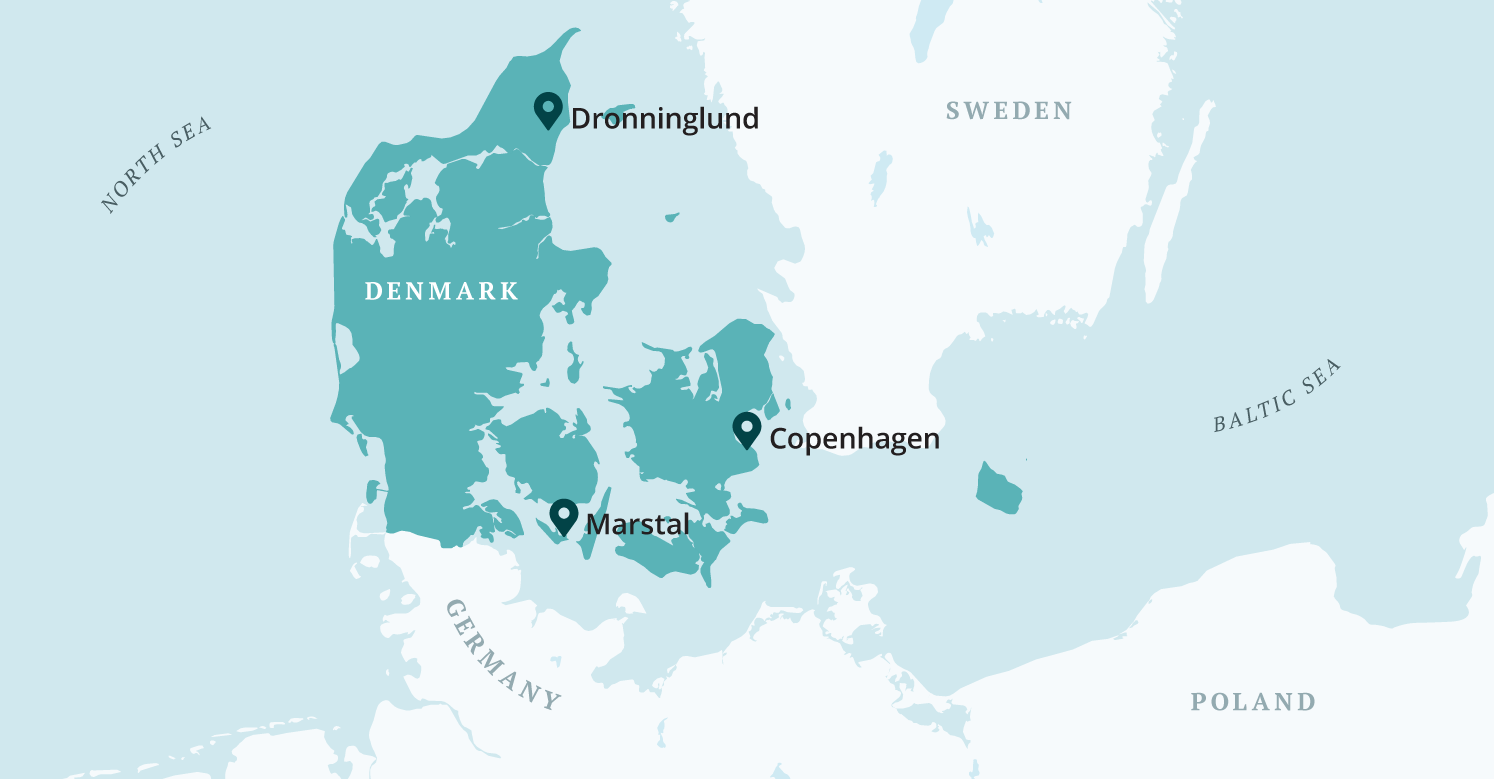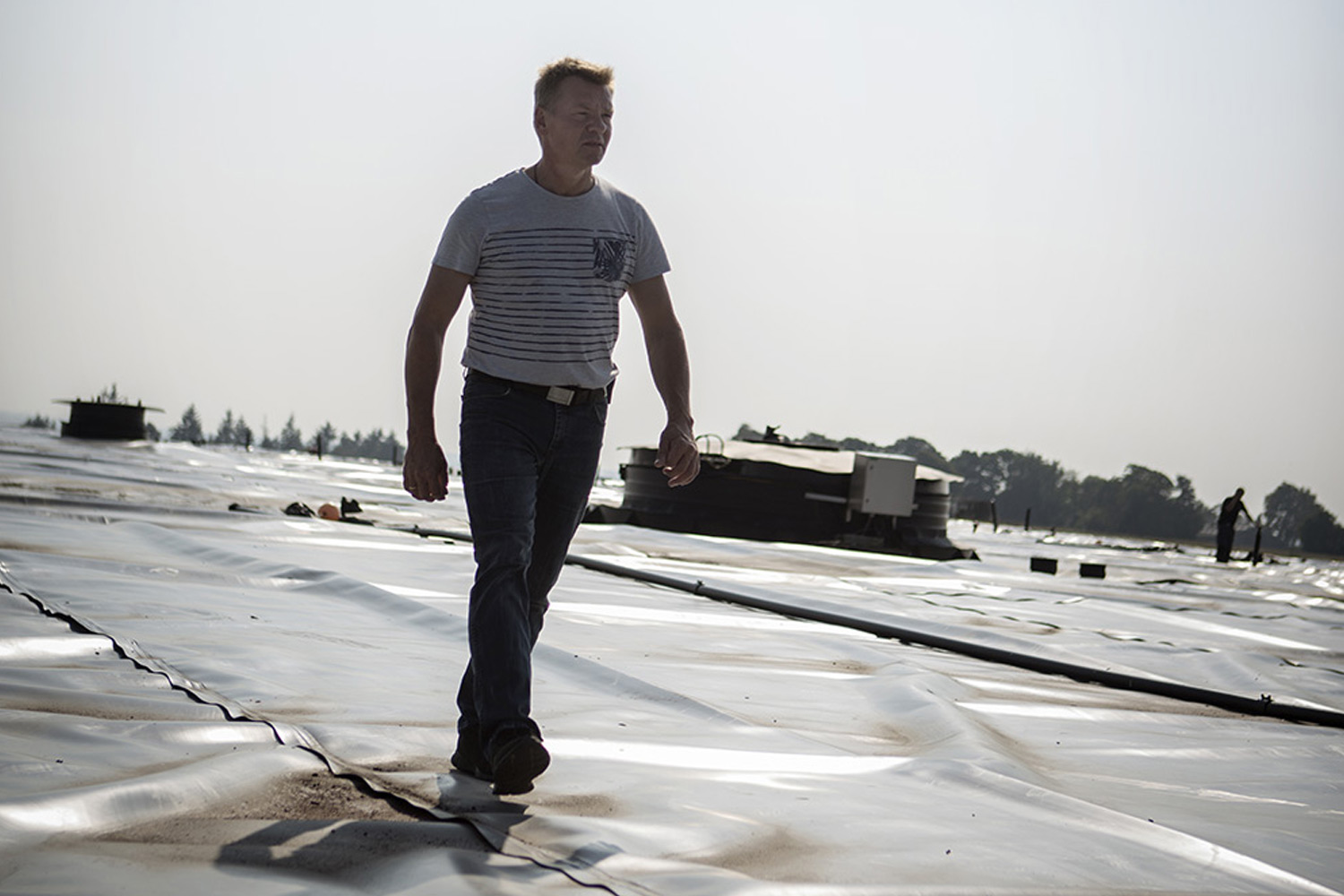This energy technology gets no respect at all — but it's cutting carbon
/https://static.texastribune.org/media/images/2016/11/16/JimDenmark.jpg)
Editor’s note: This is the second story in a series about global and local efforts to conserve energy and limit pollution through energy efficiency.
MARSTAL, Denmark — For centuries, this town of 2,300 on the island of Aero has been fueled by the sea. Shipping companies keep their homes here, and a maritime school dating to 1860 still trains would-be seafarers.
But it’s the sunlight — or how folks here captured it — that has brought more attention recently to the 34-square-mile Baltic Sea island.
Nestled between a cluster of homes and rolling farmland, rows of solar thermal panels fill a space that could fit more than six (American) football fields. Connected to a massive lined pit filled with water and a sprawling network of underground pipes, the panels can meet 55 percent of the town’s heating demand. They do this without straining the nation’s electricity grid, even though the weather here can be frigid.
The community-owned nonprofit solar heating plant was the world’s biggest when it was completed in 2003. Others, including several in Denmark, have since surpassed it size, but Marstal plant manager Lasse Kjærgaard Larsen said he frequently hosts international energy wonks who want to learn more.

"Every day, we are trying to get the best out of the plant,” Larsen, wearing blue jeans and a short-sleeve button-down shirt, said as the sun’s rays did their part on an unusually warm, clear morning in September. “The more we learn, the cheaper it gets.”
In Texas and elsewhere in the United States, critics of wind and solar energy harp on the intermittency of the sources. The sun doesn’t always shine, and the wind doesn’t always blow, so other power sources must pick up the slack to keep the lights on. And at certain times, wind and solar projects might generate more power than people immediately need, meaning some power is wasted. Renewable energy advocates pine for a holy grail — large-scale battery technology that could store electrons for future use. It’s too expensive now, but it could be cheaper some day.
Marstal’s project demonstrates a simpler, cheaper method of storing energy: in an insulated tank that holds sun-heated water.
The Marstal plant does not generate electricity — just heat. But by meeting the town’s heating needs efficiently, it keeps a significant portion of the energy demand off of the electricity grid that stretches to Aero, where wind generates 120 percent of the island’s electricity demands (the surplus can be exported — sometimes to Germany, about 30 miles across the sea).
It’s made possible through an ancient but ever-evolving concept that’s become prolific in Denmark and elsewhere in Europe: district energy. It involves heating hot water (or chilling it in communities that more often need air conditioning) at a centralized source and sending it directly to homes through underground pipes. Residents connected to those systems can control home temperatures just as if they ran individual electric boilers or furnaces, but the setup runs far more efficiently.
It’s a concept familiar to Texas, where universities, industrial complexes and medical centers are using district energy to meet the high demands of their dense campuses and limit stress on the state’s electricity grid. But homeowners rarely get the chance to share in the savings, partly because of a lack of incentives in the state’s competitive energy market. Environmentalists and energy efficiency advocates hope that state officials in the coming years will find new ways to encourage such investments.
Fueling an energy transformation
Denmark has slashed carbon dioxide emissions by 37 percent since 1990. The rapid growth of the Danish wind industry, which last year generated 42 percent of the country’ electricity, has garnered most international attention. But the transformation would not be possible without the thousands of miles of district energy pipelines buried underground.
Advocates have called district energy the Rodney Dangerfield of technologies because it “gets no respect at all” for its key role in curbing emissions. About 60 percent of Danish homes hook up to district heating networks, which can be fueled by a variety of sources — more often natural gas, wood pellets or incinerated waste than solar power.
Some projects intertwine electric generation and district heating — using heat that escapes spinning generation turbines (and would otherwise be wasted) to make hot water that the pipeline networks distribute throughout a city or campus.
These “combined heat and power” plants, depending on the type, can utilize up to 90 percent of the fuel put into them, compared with 40 percent from electricity-only generation, according to the International District Energy Association. Four decades ago, the Danish Parliament passed a law requiring all electricity generators to capture and store heat for reuse. Though it’s not the same as storing electrons in batteries to make the electricity grid more reliable, storing energy in water that heats homes can unleash similar results: less stress on the grid and lower emissions.
Denmark's district heating system is so developed, said Lars Hummelmose, managing director of the Danish Board of District Heating, that the country essentially has the “cheapest battery in the world.”
So how exactly does the Marstal project work?
In the summers, it’s incredibly simple. The solar panels collect heat that warms the water in storage, and that water meets the city’s relatively mild heating demands.
When September ends, Larsen’s crew runs a woodchip boiler to add a bit of heat to the stored water (Even though it’s insulated, the water still loses a fraction of heat over time). Whenever power prices are particularly low — if breezes are particularly strong for the island’s turbines, for instance — the crew uses a heat pump to maintain the right temperature. During the winter, it might occasionally run the backup boiler or heat pump, but just for a few hours at a time.
By February, the solar panels will start heating the water again, before fully taking over in April.
“In the summer, we don’t have much to do because the sun takes care of everything,” said Larsen, who needs just five employees year round.
Other small Danish towns, including two The Texas Tribune recently visited, have embraced solar thermal projects. The nation’s strong central government has encouraged them through a mix of policies, including subsidies, low-interest loans, higher taxes on fossil fuels and broad carbon-cutting goals.
Once operational, the plants deliver heat at a predictable cost because they require little fuel. As a nation, Denmark generates residential power at cheaper base prices than most European countries, but far more expensive overall prices because taxes can make up two-thirds of Danes’ utility bills. In 2013, Danish households on average paid more than three times what Americans did per unit of electricity.
Dronninglund, a town of 3,300 in northern Denmark, built a $15 million plant in 2014 that was similar to Marstal’s. Some residents were initially skeptical, locals say.

“They were scared by the annual amount of money that was needed,” said Ole Torp, who covered the years of planning that went into it for the local newspaper. But he said residents now tend to be pleased with the plant and that they have avoided sticker shock.
Carsten Møller Nielsen, chairman of the district heating utility’s board, said it will take a total of 25 years for Dronninglund to pay off the low-interest government loan that funded the project, and once it does, heating rates should be incredibly low because fuel from the sun is free.
Consumer-owned nonprofits oversee district heating efforts in Dronninglund, Marstal and most Danish cities. This gives homeowners a vote on such projects and extra incentive to look at long-term savings and costs.
“When you own a home here, you own one part of the company,” said Larsen, of Marstal. “I pay the same price as everyone else.”
A different picture in Texas
That’s partially why few homes can hook up to district energy sources in Texas. Because of its hot summers, the residents could benefit from district cooling — the distribution of chilled water underground to cool homes. But the Texas energy market does not always incentivize such projects.
With some exceptions, Texans buy energy from companies that compete with one another and don’t necessarily benefit when homeowners use less power.
“The free market — with a bunch of different buyers and sellers — doesn’t do well with building shared infrastructure,” said Michael Webber, deputy director of the Energy Institute at the University of Texas at Austin. “With district heating and district cooling, you don’t want eight different companies with different types of infrastructure.”
Nor would district energy work as well in sprawling Texas communities.
But some municipal utilities in Texas, which were untouched when Texas deregulated its electricity market in 2002, have dabbled with the concept. That includes Austin Energy, which delivers water chilled at two downtown cooling plants to 32 customers that have hooked up to its underground pipes. The cooling district, which spans a few blocks, includes big energy users like hotels, office buildings and the convention center.
The system, which includes a 2.4 million-gallon thermal storage tank, helps the utility meet peak power demands, particularly on hot summer days.
“In a place like Austin, where you have a city that wants to increase energy efficiency and utility owns the infrastructure, it makes more sense,” Webber said.
Elsewhere in Texas, the University of Texas at Austin, Texas A&M University, Houston Methodist Hospital, Dow Chemical USA and others with strong incentives to cut their power bills have invested in district cooling and power plants that capture and reuse heat.
A U.S. Department of Energy database, for instance, lists 129 combined heat and power projects of various types in Texas.
In the coming legislative session, energy efficiency advocates will pitch legislation that they hope will help Texans overcome still-existing barriers to using less energy.
Robert King, CEO of the Austin-based South-Central Partnership for Energy Efficiency as a Resource, hopes more private energy generators will take advantage of a little-noticed 2013 law that allows them to sell electricity and thermal energy to more than one consumer.
House Bill 2049 made a “seemingly technical” legal change to a law about private generation, King said, but it could pave the way for private companies to develop heating and cooling districts. It’s unclear whether the law has yet spurred such investment.
“Every time someone makes a private investment in energy efficiency, there’s some public good created,” he said. “And if we can share some of that public value with that customer, it helps carry the burden of that expense.”
Disclosure: The University of Texas at Austin has been a financial supporter of The Texas Tribune.
Reporting for this series was funded through a Transatlantic Energy and Climate Network fellowship, a project of the nonprofit Heinrich Böll Foundation in Washington, D.C. A complete list of Tribune donors and sponsors can be viewed here.
Information about the authors
Learn about The Texas Tribune’s policies, including our partnership with The Trust Project to increase transparency in news.
/https://static.texastribune.org/media/profiles/Jim_1.jpg)